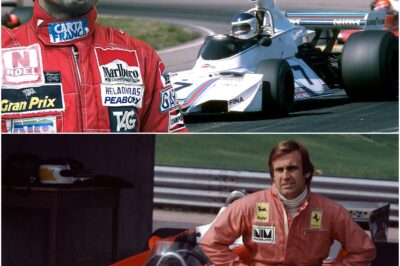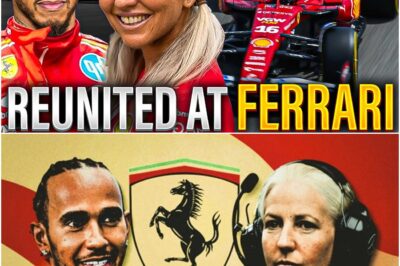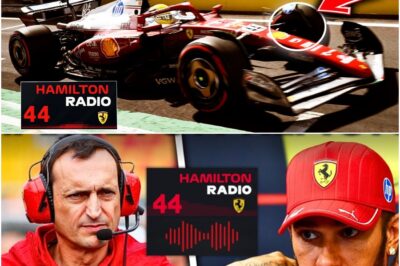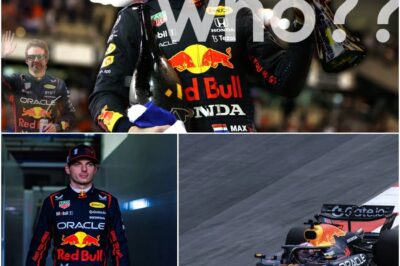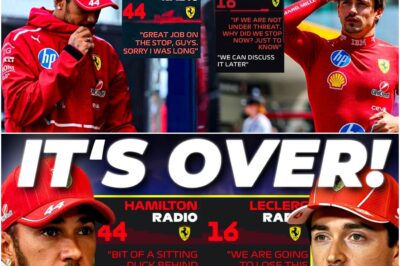The Marina Bay Street Circuit shimmered under the artificial lights, a ribbon of asphalt carved through the heart of Singapore. On September 28, 2008, Formula 1 was making history with its first-ever night race, a dazzling spectacle designed to captivate a global audience. The event was a triumph of logistics and ambition, but beneath the glossy veneer of innovation, a dark and desperate plot was about to unfold—a scandal so audacious it would forever be known as “Crashgate.” It was a story of ambition curdled into conspiracy, of a team so hungry for a taste of its former glory that it would orchestrate a victory through the most cynical means imaginable.

At the center of this storm was the Renault F1 team. Once the titans of the sport, having secured back-to-back world championships with the brilliant Fernando Alonso in 2005 and 2006, their star had faded. The 2008 season was proving to be a frustrating slog. Alonso, having returned to Renault after a tumultuous year at McLaren embroiled in the “Spygate” controversy, found himself wrestling with an uncompetitive car. The Spaniard, a double world champion, was languishing in the midfield, his immense talent blunted by underperforming machinery. The pressure was mounting on the team, and particularly on its flamboyant and powerful managing director, Flavio Briatore.
Briatore was a larger-than-life figure in the paddock, known for his shrewd business acumen and ruthless pursuit of success. Alongside him was the highly respected Executive Director of Engineering, Pat Symonds. They needed a result, a miracle to salvage their season and restore faith in the team. Their second driver, Nelson Piquet Jr., son of a three-time world champion, was a rookie struggling to make his mark, his performances inconsistent and his future with the team hanging by a thread. This potent cocktail of desperation, ambition, and vulnerability would prove to be combustible.
As the Singapore Grand Prix weekend began, Renault’s prospects looked bleak. A fuel pressure problem in qualifying left Alonso starting a lowly 15th on the grid. For a track notoriously difficult for overtaking, a meaningful result seemed impossible. Yet, the team devised an unusually aggressive strategy for their star driver. They would pit him early, filling the car with a light fuel load to allow him to push hard and make up places. It was a high-risk gamble; for it to pay off, something extraordinary would have to happen.
And on lap 14, it did.

Nelson Piquet Jr.’s Renault speared into the wall at the tight Turn 17, a section of the track with no crane nearby, guaranteeing the deployment of the Safety Car. The timing was, for Alonso, miraculously perfect. The pit lane was closed just as the leaders were due to make their stops, while Alonso was already sitting pretty, having pitted just moments before the crash. As the race neutralized behind the Safety Car, the field bunched up. When the pit lane reopened, the front-runners dived in for service, and through the chaos, Fernando Alonso cycled to the front of the pack. From a hopeless 15th, he inherited a lead he would not relinquish, going on to claim one of the most improbable victories of his career.
In the immediate aftermath, it was hailed as a strategic masterstroke, a fairytale win born from audacious planning and a stroke of incredible luck. Alonso celebrated jubilantly, a much-needed triumph for the beleaguered team. Piquet Jr. called it a simple driver error. But behind the scenes, whispers had already begun. The sheer perfection of the timing was too convenient for some, the crash too fortuitous. Yet, with no evidence, the story faded, written off as a bizarre but brilliant chapter in F1 history.
The truth, however, would not stay buried. Nearly a year later, in mid-2009, the bombshell dropped. Nelson Piquet Jr., having been unceremoniously dropped by Renault for poor performance, sought revenge. He went to the sport’s governing body, the FIA, with an explosive allegation: his crash in Singapore was no accident. He claimed he had been ordered by Briatore and Symonds to crash deliberately at that specific corner and on that specific lap to trigger the Safety Car and execute their winning strategy for Alonso.
The FIA launched a full-scale investigation. Piquet Jr. provided a detailed account of a meeting before the race where the plan was allegedly laid out. He described being shown the exact point on the track to crash. His testimony was damning, and it was supported by telemetry data from his car, which showed him braking and accelerating in an unnatural way just before the impact, as if struggling to control a deliberate spin. The pieces of the puzzle snapped into place, revealing a conspiracy of shocking premeditation.

Faced with irrefutable evidence, Renault announced they would not contest the charges. Briatore and Symonds departed the team before the FIA World Motor Sport Council hearing. The verdict, when it came, was seismic. Flavio Briatore was banned from all FIA-sanctioned events indefinitely, a career death sentence. Pat Symonds received a five-year ban. The Renault team was handed a two-year suspended ban, essentially a disqualification that would only be enforced if a similar offense occurred again.
As for the drivers, Piquet Jr. was granted immunity in exchange for his testimony, but his reputation was shattered. Seen as both a whistleblower and a cheat, his Formula 1 career was over. Fernando Alonso, the beneficiary of the entire scheme, was officially cleared of any wrongdoing. The FIA concluded he had no knowledge of the plan, a finding that remains a subject of intense debate among fans to this day. Alonso maintained his innocence, but the victory in Singapore would forever be tainted, an asterisk hanging over his legacy.
The fallout from Crashgate was profound. It sent shockwaves through the motorsport world, damaging Formula 1’s integrity and exposing the dark underbelly of a sport where the pressure to win can eclipse all ethical considerations. It raised uncomfortable questions about power dynamics within teams and the vulnerability of young drivers. The FIA responded by strengthening regulations against race manipulation, but the scar remained. Crashgate became a benchmark for sporting fraud, a cautionary tale of how desperation can lead to the ultimate betrayal of fair play. It stands today as one of the most sordid episodes in F1’s long and storied history, a reminder that even in the most glamorous of arenas, the line between victory and villainy can be terrifyingly thin.
News
The F1 Driver Who Defied Team Orders and Changed the Course of Motorsport Forever This is the story of how one rebellious move on the track transformed the career of an F1 driver. Ignoring team orders, they set a new precedent in motorsport. It’s a move that shook the sport and led to a legendary status. You won’t want to miss this incredible journey.
Carlos Rootman: The F1 Driver Who Ignored Team Orders and Became a Legend In the world of Formula 1, team…
In a surprising twist, Lewis Hamilton and Angela Cullen have reunited at Ferrari. What does this mean for both their futures and Ferrari’s plans? Fans are buzzing with curiosity about how this partnership will unfold. There are many questions, but one thing is clear—this could be a pivotal moment.
he Surprising Reunion of Angela Cullen and Lewis Hamilton at Ferrari: What Does It Mean for Their Future? When Lewis…
Hamilton’s Shocking Radio Message After Monza GP Leaves Engineers Speechless: What Did He Say That Took Everyone By Surprise?
The Radio Message that Could Change Everything for Ferrari and Hamilton Monza, the iconic Italian Grand Prix, has always been…
Max Verstappen has completely reshaped the world of Formula 1, but what if he was never part of the sport? What would the competition look like today without his remarkable skill, talent, and dominance on the track? The answer might surprise you.
The World Without Max Verstappen: A Formula 1 Reimagined Max Verstappen is undeniably one of the most electrifying talents to…
Max Verstappen Continues His Unstoppable Run, Leaving McLaren’s Controversial Team Orders in the Spotlight!
Max Verstappen’s Unstoppable Victory at the Italian Grand Prix Amid McLaren’s Controversial Team Orders In what was one of the…
Hamilton and Leclerc are absolutely furious after a leaked radio conversation from Ferrari at the Monza GP sent shockwaves through the paddock. The contents of the conversation have raised questions about the team’s decisions during the race. What was Ferrari hiding, and why were the drivers so upset?
Ferrari’s Monza Heartache: A Battle Between Potential and Frustration The 2025 Formula 1 season has been marked by excitement, unexpected…
End of content
No more pages to load

